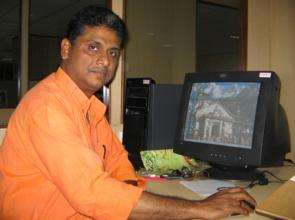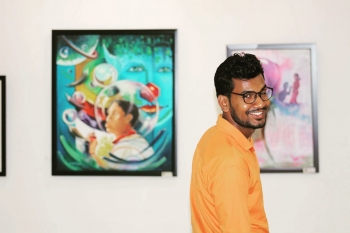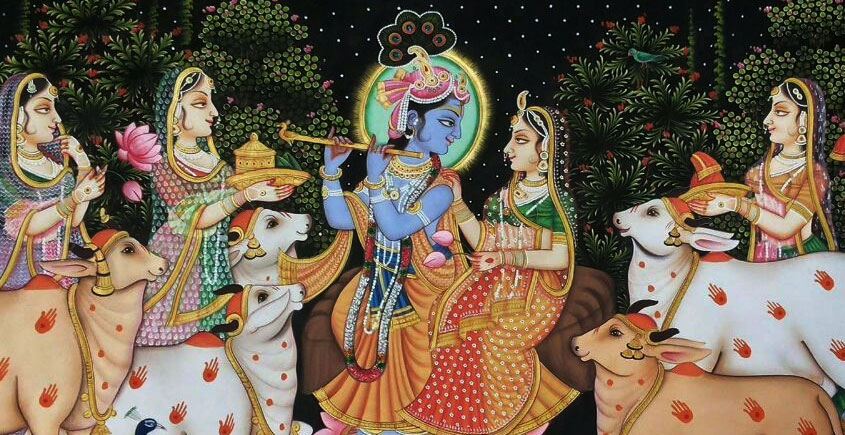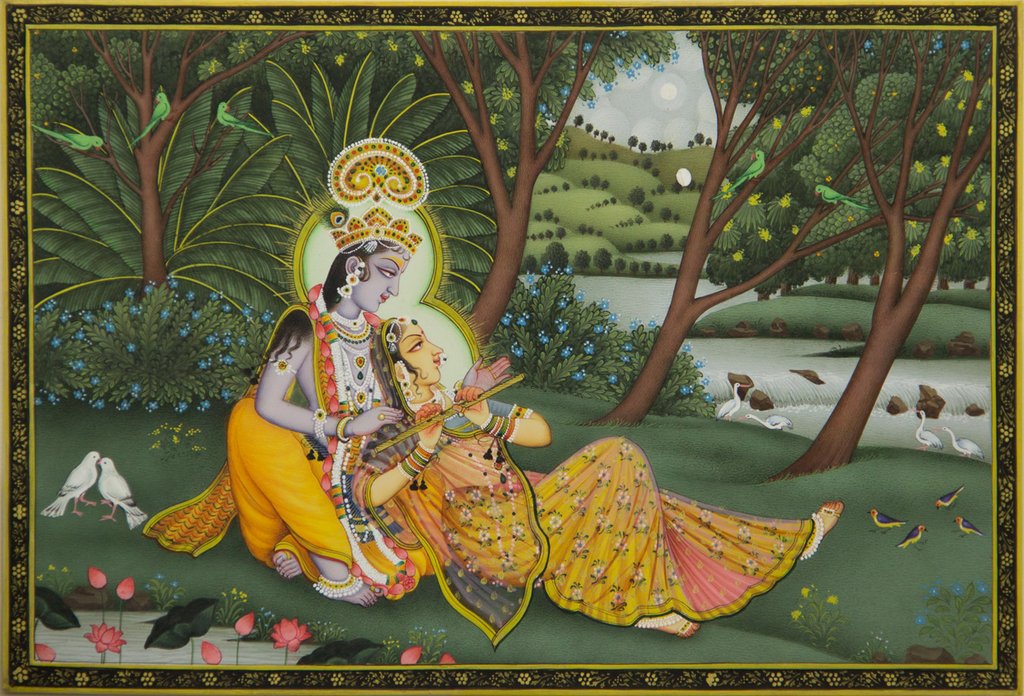
Krishna, the most adorable God in Hindu mythology and Radha, who enchants even him, are not separate but one entity. Their survival is incomplete without each other. The idols are placed, worshipped and their names are taken together. Since this divine couple is never witnessed by human senses, we can believe what we have received in our heritage. We come across a large number of alleged evidence through paintings, scripts, holy books and stories of their existence. The artists love to illustrate the conceptual version of this majestic pair using a wide extension of excerpts from the past. One substantial example of artwork is the Pichwai paintings.
Origin
The word originates from Sanskrit term “pich” which means back and “wais” which is translated as hanging. This concludes the meaning as something hanging in the background. It becomes clear from the fact that these paintings are found in the backdrop of the idol of Lord Srinath Ji. They emerge from the Nathdwara district in the 17th century when the rule of Aurangzeb led to the destruction of Hindu temples. To preserve the culture, Pichwai artists started investing in the creation of Radha Krishna paintings and moved to Rajasthan. It is the most well-known sub-style of the Nathdwara paintings.
Forms of painting
This kind of paintings is made in accordance with the various aspects of the deities’ lives, their multiple forms of worship, relevant occasions and festivals to celebrate them.
- Life Stages
- The picture of Baal-Gopal is one of the most attractive pieces of this art form. The childhood of Lord Krishna signifies happiness and prosperity. It can be found in almost all the Hindu households.
- Another disposition of the supremacy is followed in the form of Banke Bihari. It is the illustration of the time when Sri Krishna explored and played in the forests of Vrindavan.
- Rasaleela is the most common depiction of the love saga of Radha and Krishna. It portrays the Krishna holding his flute and Radha mesmerized in his aura. The Gopis are also shown dancing around on the melody.
- Dwarkadheesh gives a glimpse of the coronation of Krishna as the king of Dwarka. These paintings showcase the glamorized side of the Lord’s life.
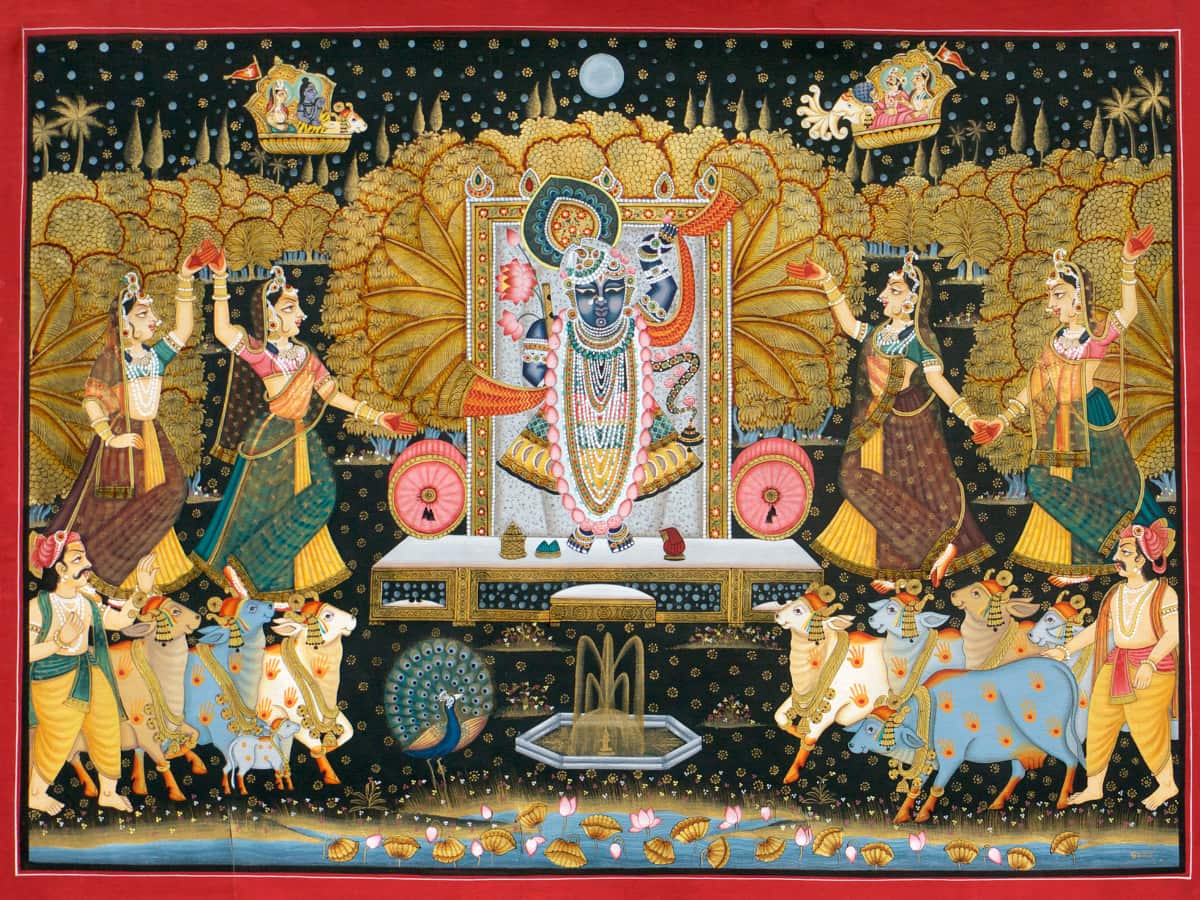
- Festivities
- Holi
Most of us do not know but this major festival celebrated throughout the country is associated with Radha and Krishna. The people of Braj, Mathura and Vrindavan are famous for playing with colors, flowers and other things to cherish the bond of these two. This jollification is painted on the canvas to add value to it.
- Krishna Janmashtami
The birth of Sri Krishna is an event of utter elation. It is a moment of merrymaking for all the devotees. Every year this affair attracts millions of Krishna lovers and preparations are done to decorate the houses and temples. Pichwai is used for this purpose on the occasions as Radha Krishna paintings.
- Radha Ashtami
This holy day is celebrated to commemorate the birth of goddess Radha. It is celebrated exactly 15 days after Janmashtami. Artists indulge in making sculptures and paintings of Radha-Rani and adorn them as an offering to her.
- Govardhan Pooja
Also known as “Annakoot”, this is the festival of feeding the deities with a large variety of vegetarian food. This day reminisces the time when Sri Krishna saved the Vrindavan citizens from excessive rainfall by lifting the Govardhan hill with his little finger. This particular still is drawn and painted in by Pichwai artists on a large scale.
- Jhulan Yatra
This is the most spell-binding view of Radha and Krishna together on a swing. It is the most important festival for the Vaishnavas in the monsoon season. It involves pilgrimages and parikramas of the fanatics and employs equal efforts as any other festivity.
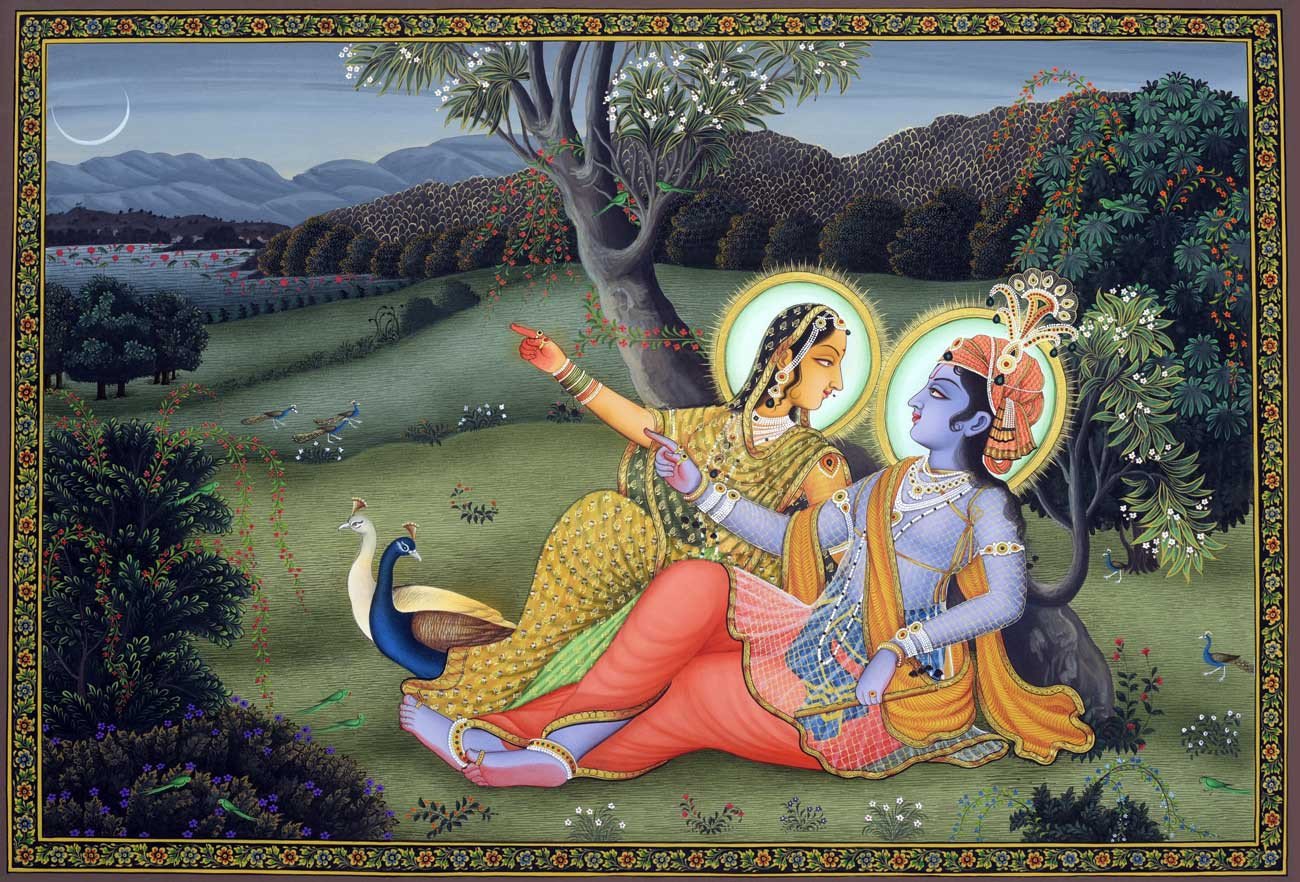
Pichwai art in the market
As it can be seen, the most customary Pichwai paintings characterize wide eyes, sharp nose and a hefty body. This fabric painting is based on a starched cloth which takes 2-3 days to be ready and the whole piece takes almost a week to complete. Other than paints, the art utilizes embroideries, patchworks, appliqué, block printing and metallic threads to prepare the paintings. Various specifications of this art include lotus flowers beneath the idol, the moon above the image, animals surrounding the gods, water bodies flowing alongside and other supplements to define the piece. The art collectors prefer deep borders, vibrant shades and minute definitions. It has been a long time that this art is prevalently a part of the business sector. Trading firms that supply artwork have an extensive range of these paintings. People from parts of Uttar Pradesh and Rajasthan not only like to see these dangling inside the temples but also buy and take them home to adorn the walls of their homes. The Pichwai art proves to be quite successful in safeguarding our Hindu legacy.













